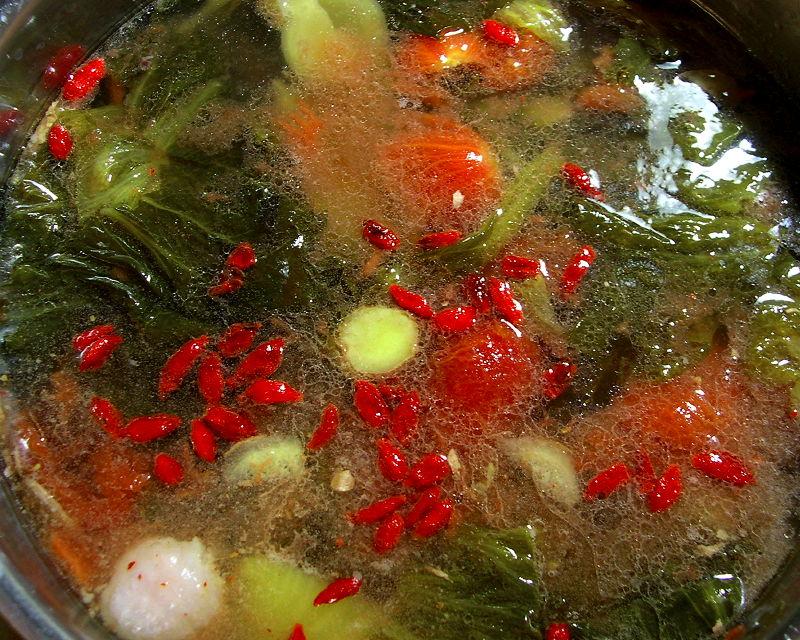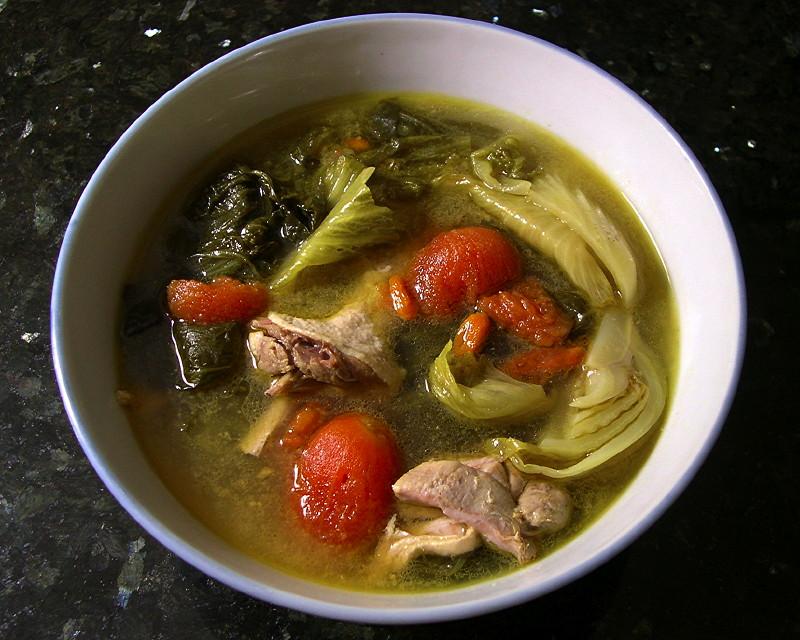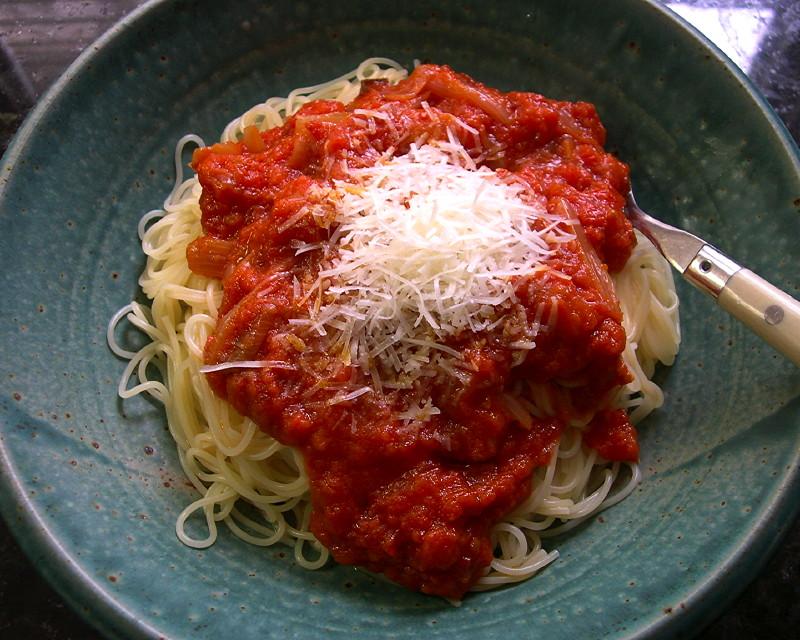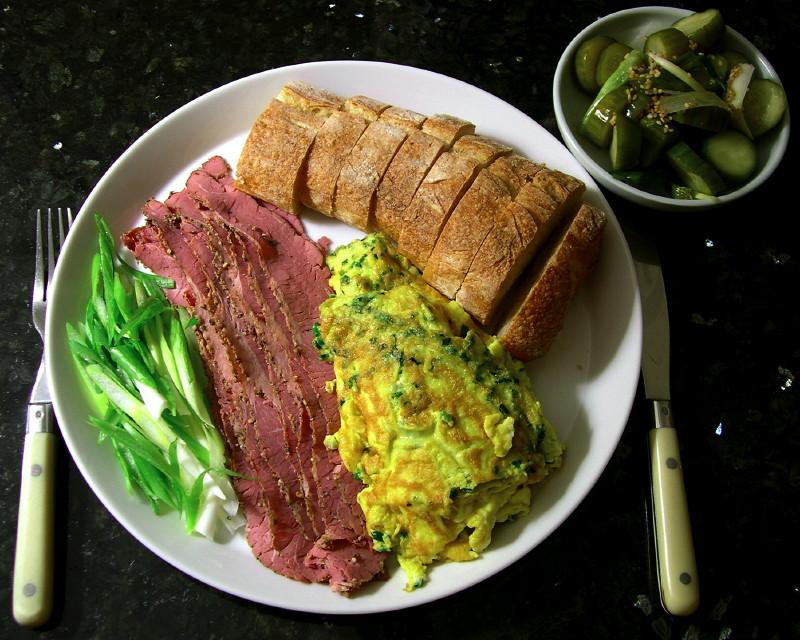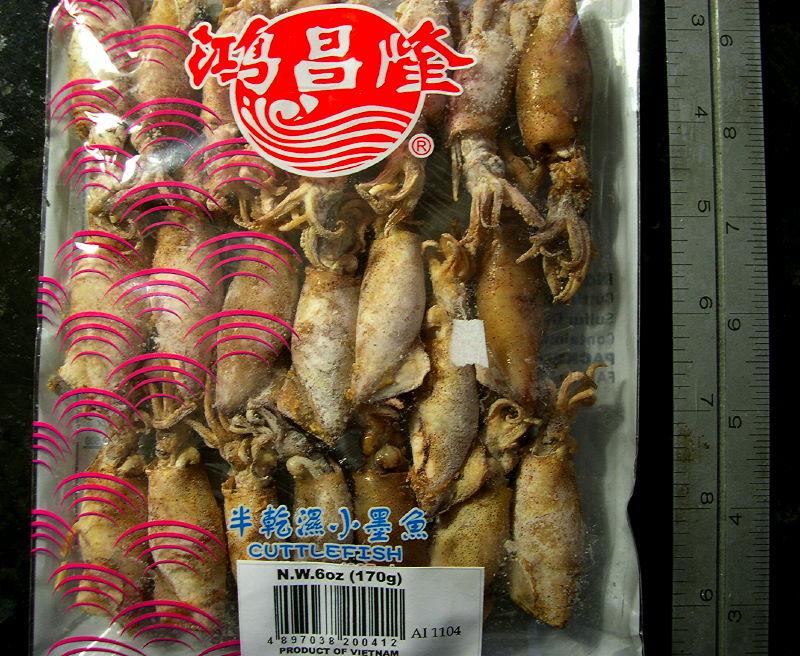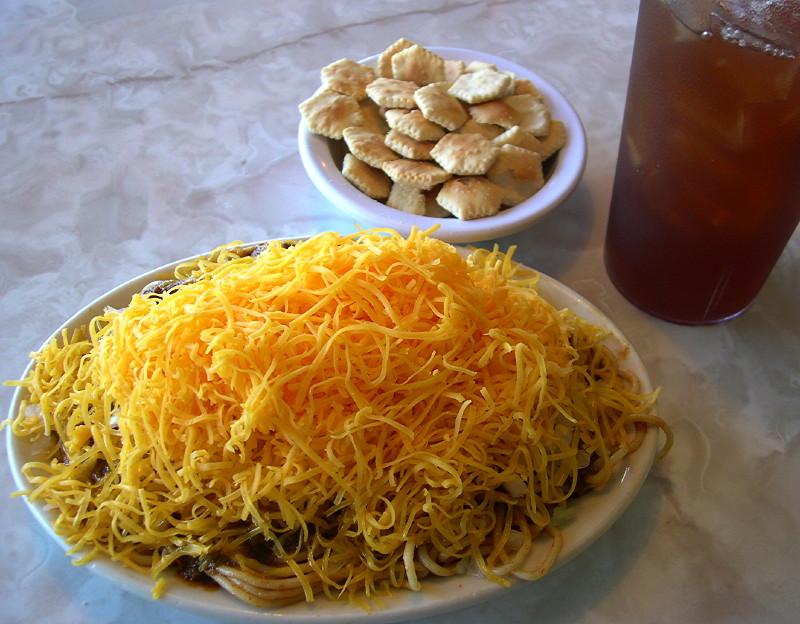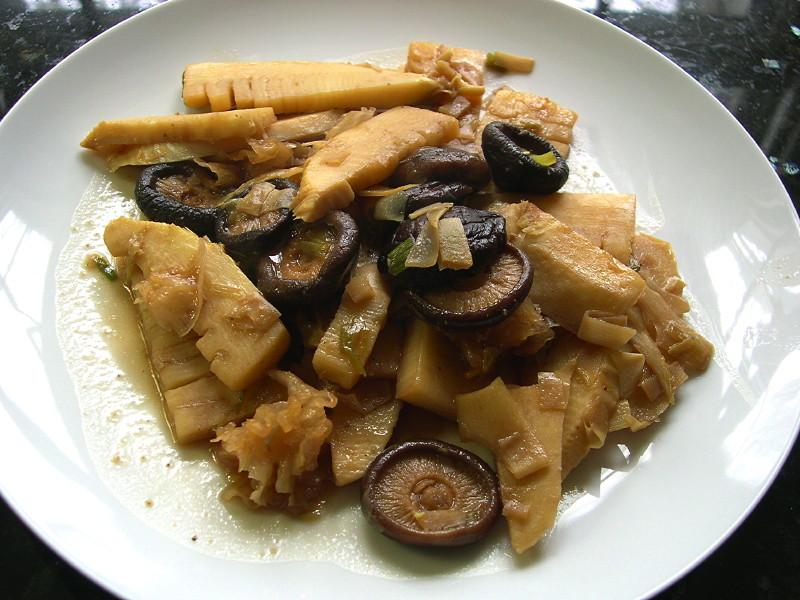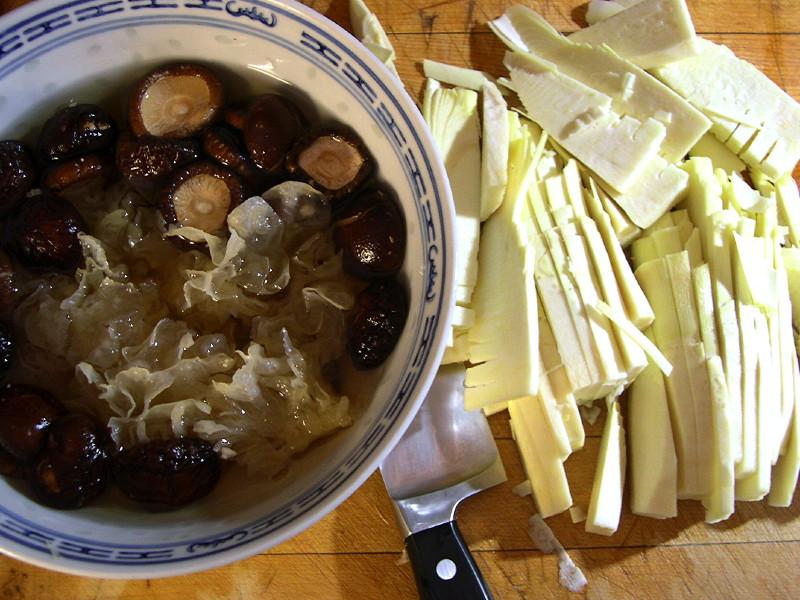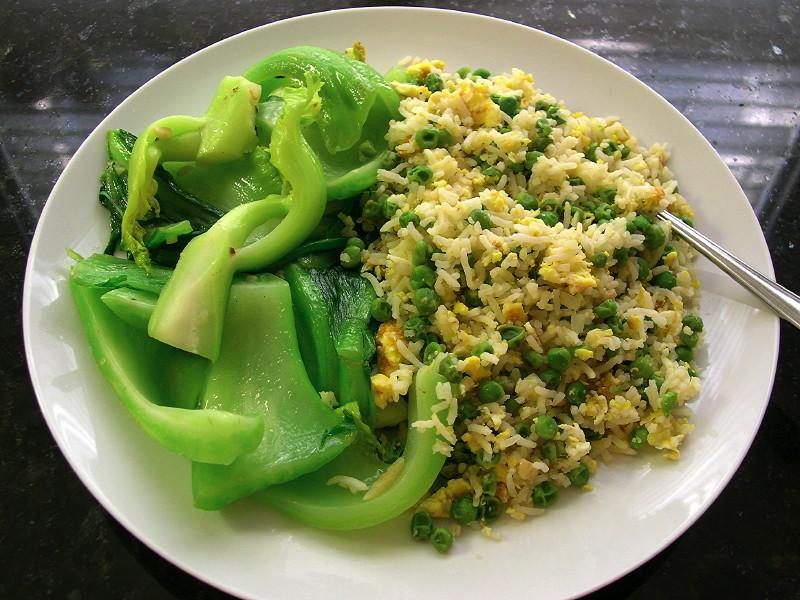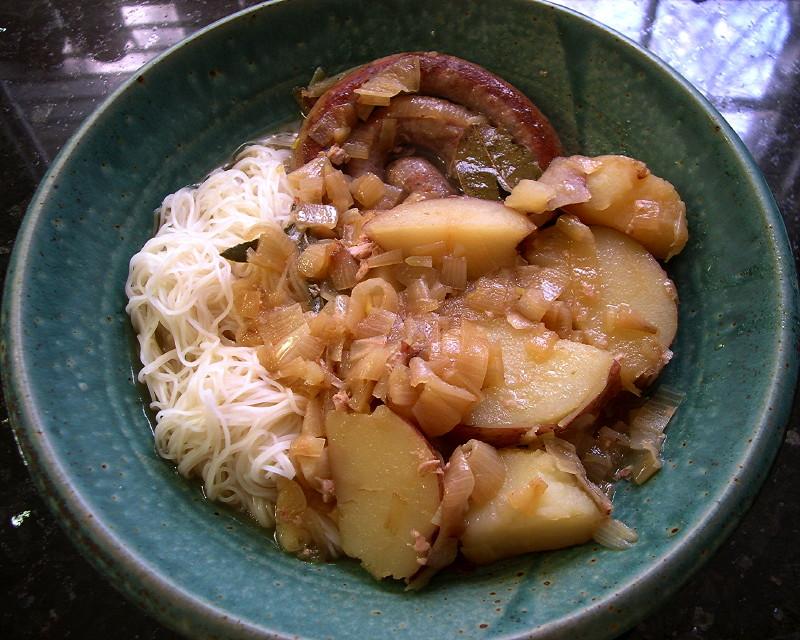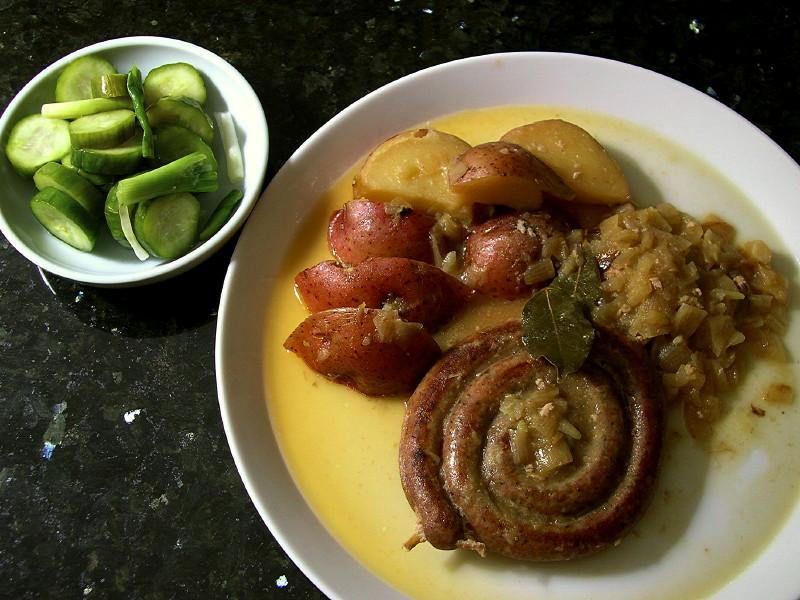-
Posts
3,810 -
Joined
-
Last visited
Content Type
Profiles
Forums
Store
Help Articles
Everything posted by huiray
-
Top Chef Season 12 will be in Boston. http://www.bravotv.com/blogs/the-dish/top-chef-season-12-is-heading-to http://www.bostonglobe.com/lifestyle/names/2014/04/29/top-chef-will-film-its-season-boston-this-spring/1gYq6VjjT0jDGsQIP8nOcN/story.html http://eater.com/archives/2014/04/30/top-chef-season-12-will-be-in-boston.php
-
:-) Have a look at this... https://www.google.com/search?q=%22%E9%87%91%E9%87%9D%22&client=firefox-a&hs=0cu&rls=org.mozilla:en-US:official&channel=fflb&source=lnms&tbm=isch&sa=X&ei=4TFhU7jnOdOayATXiIHoBw&ved=0CAgQ_AUoAQ&biw=1189&bih=941
-
I use "French Breakfast Radishes" in any number of ways. By themselves, in pickles, in stews, in braises, in roasts, in salads, anywhere a radish-like ingredient with the characteristics it has - complimentary to or in place of other radishes such as daikon etc etc might be used, or as an abetting of other radishes I might use. There is no requirement that I use it for breakfast only, as the name is wont to suggest. I'm sure you are speaking tongue in cheek, but even so it is still of note that the notion would even be floated whether in jest or not that "French Breakfast Radishes" are for breakfast (together, no doubt, with the requisite egg in some form or other) and for no other time - in an oblique way of suggesting that (speaking in a broad sense) certain foodstuffs are appropriate for breakfast, or lunch, or dinner, and never the twain shall meet, according to folks who hold to such things. They are free to feel that way, of course, and it is possible that they feel that such things give a certain structure to one's daily meals. However, other folks may consider ANY foodstuff to be fair game for ANY meal whenever that meal is consumed and one should be cognizant that the imposition of expectations of the use of foodstuffs for meals on other folks may not be entirely valid. Why not simply take in what folks post about what they ate at a particular time of day or for a particular meal, without dissing the choice of ingredients for said meal? Or apologizing for "having breakfast for dinner", as another facet of this phenomenon? Just simply say you had an omelette and bacon for dinner, for example, rather than going into some spiel about having breakfast (whatever that is) for dinner (whatever THAT is).
-
Day lily bulbs are well-known in Chinese cuisine. The dried flower buds of day lilies are even more widely known and used; known as "kum chum" in Cantonese, used extensively in Chinese cuisine. I've shown the use of them in many of my dishes posted here on eG. But as for foraging from my backyard - that is limited to what had planted beforehand, inclusive of either herbs or vegetables. Does that fall under your rubric of "Foraging", or does your use of the term apply largely to plants that "happen" to come up and are/were not specifically planted to be harvested? (I suppose dandelion greens for salads would qualify, then, although I have not done it - and I have plenty of dandelions available)
-
I forgot - some sour plums (flesh partially ripped apart) also went in.
-
I think you are referring to his meals in Taiwan, yes? Um, Taiwan is not a Third World Country, just in case you were implying it by referring to "third world problems". See here for starters. (In fact, the EIU ranks Taiwan as a better place to be born in (#14) than the USA (#16). :-) )
-
Duck & pickled mustard soup. (鹹菜鴨湯) Tonight's version made w/ skin-on fat-on duck leg quarters, pickled mustard (wet, in packages; soaked in water then squeezed out), de-skinned tomatoes [Racconto], sliced ginger, goji berries, sea salt, rice vinegar, hon mirin [Takara]. Being cooked. Served.
-
Yes, it is, a.k.a. "Singapore style mei fun". Just be aware that it is a dish that doesn't really exist in Singapore but is found in American-Chinese food and other places outside of Singapore.
-
-
In any case, it might be an idea (just a suggestion) to read up on how "curry" is an Anglicized short-cut to refer to these sort of dishes, just in case anyone challenges anyone at that pot luck; :-) and that any specific dish of this sort, even an authentic "Indian" dish, would not have the term "curry" in its specific name in its natural language in whichever regional cuisine it belongs to in the South Asian subcontinent. Ditto other Asian regional dishes, in a general sense, although the term "kari" appears here and there too. ;-) p.s. In addition to the other suggestions already listed for something different, consider Nyonya dishes, if you can get your hands on the requisite ingredients for recreating stuff that closely approximates those dishes. :-) Try "Kari Kapitan". (There you go, the term "kari" is used there in its name)
-
I posted about a lunch I had yesterday and it reminded me about this thread. A regional dish (spanning several states) that is loved by many folks in that multi-state region but hated, HATED, by some folks outside of that region (especially by those devoted to the Texas-type chili and other similar chilis) – is Cincinnati-style chili, a widely-known purveyor of which is Skyline Chili.
-
Another simple dinner. Beef pastrami,* eggs with Western chives, crusty baguette,* sliced scallions, pickled Japanese cucumbers & scallion w/ toasted sesame seeds. * from Goose the Market.
-
Asia Mart: Fresh ginger, fresh wood-ear mushrooms, garlic, dried cuttlefish (medium-sized, small-sized, whole teeny ones), key limes, frozen "fresh" beancurd skin, dried beancurd sheet, dried medium-sized Chinese mushrooms "far koo" type, Taiwanese thin wheat noodles (Fook Chow type Min6 Sin3) (not always around, I stocked up), Phoenix brand fried tofu puffs, Venus brand frozen fish emulsion, Ti Guan Yin Oolong tea, Cincalok shrimp sauce, sliced water chestnuts, Chinese chive flowers, packaged Harm Choy/salty-sour mustard, thick-cut pork belly slices, ground pork (lean meat), Kong Yen brand "Aged Gourmet Rice Vinegar" (陳年酢) (this is not always in stock, I stocked up), red-streaked edible amaranth (Seng Choy), green onions/scallions (6 bunches for $2), daikon, fresh winter bamboo shoots, long hot green peppers/chillies, Vietnamese coriander, Chinese-type coriander/cilantro, small Bok Choy, whole yellow-skin chicken (the good stuff). Pic of the teeny/baby cuttlefish: Note that "cuttlefish" here is just that, cuttlefish - NOT squid.
-
-
Skyline Chili 4-way onions, 'medium'. Oyster crackers (obligatory, comes w/ the meal), iced tea. The waitress was kind enough to bring me an additional 'small' portion and charge me the price of a single 'large' order. I really enjoyed my meal, it's been a while. YUM. Then off to Così fan Tutte Live in HD in the Cineplex down the road. :-)
-
So far today: Indy Winter Farmers' Market (last day): Chives, fresh shiitake mushrooms, free range brown eggs. Goose the Market: Fresh duck leg quarters, fresh marinated (jerk-rubbed) duck leg quarters, ramps, bread baguette, Finocchiona, Kenny's St Jerome cheese, house beef pastrami.
-
Have a look here and follow the links for Menglembu Peanuts (and the roasting method & etc) for one kind of peanut one gets in Malaysia... :-)
-
The links are to the posts. Try refreshing/reloading the webpage for each link after the first load. Yes, the broccoli rabe is a component in the overall sauce, although a major one. The pasta would be the predominant component in the dish after everything is tossed together, as shown in the pics.
-
@patrickamory, I was curious about this meatball recipe and went looking for it on the Boston Globe website too. I located what must be the recipe in the archives, "Meatballs with tomato sauce", posted in August 2009 and listed as "adapted from Il Casale". Would that be the one? The recipe I have says 1/4 cup olive oil for te sauce; and 1/2 cup olive oil for the meatballs - I suppose that is where your 3/4 cup of olive oil comes from, as the total? (It also uses canned San Marzano tomatoes) As for the rinsing of the meat, I see it says "In a colander under cold running water, rinse the beef and pork". Hmm, I dunno - in my experience ground beef (more than ground pork) often "leaks" a pinkish liquid, presumably myoglobin plus residual blood (if any) plus whatever else, especially supermarket ground beef that has been frozen then defrosted, and I sometimes even squeeze it lightly to get rid of this before frying it up.. Curdled stuff results if I do not. Perhaps that is the origin of the "rinsing the ground meat"?
-
For myself, I don't find broccoli rabe bitter in the least - but I understand some folks do, like yourself, obviously. When you say you "boil quickly" do you mean you blanch it then discard the hot water/drain the broccoli rabe? If so, that should remove at least some of what you find to be the bitterness - then one cooks it further in a dish? Try using it in a pasta sauce - like here or here or here (scroll down) - or using sweet capicola instead, and/or sun-dried tomatoes and/.or omitting peppers, etc. Perhaps the other flavors and tastes might balance out the bitterness for you. Or use some mirin or sweet cooking wine to counteract what you find as bitterness.
-
Probably around 30 minutes or so. In actuality I added some water before I cooked it down. The sliced bamboo shoots were actually heated in a pot of water brought to boiling point (so it was in water for a while already) then left in the boiling water - it was more like several minutes (maybe 5, I didn't count) rather than one or two - and the blanching water dumped and the slices rinsed under running water. I usually cook bamboo shoots for longer than this, yes.
-
Couple of lunches. ------------------------------ Fresh winter bamboo shoots & Chinese mushrooms, in a sort-of style of Shandong cuisine. Winter bamboo shoots (the big type), bracts stripped, trimmed, etc, cut into rectangular slices, blanched in boiling water for a minute or two. Dried small Chinese mushrooms, stems removed, soaked to soften. Dried snow fungus, soaked to soften, trimmed. Scallions, trimmed & chopped up, tossed into hot vegetable oil and stirred around or a short while --> "scallion oil". Mushrooms & bamboo shoots added, tossed around/stirred w/ spatula. A mixture of "aged soy sauce", Shaohsing wine, hon mirin, ground white pepper (generous amount), oyster sauce and a bit of chicken stock added. The mixture was tossed around and cooked down, seasoning/salting adjusted to taste. -------------------------------- • Fried rice: with chopped garlic, 3 eggs scrambled in situ, 2-day-old Basmati rice, rinsed frozen petite peas, a bit of salt. • "Kai Choy" (芥菜) stir-fried w/ garlic, salt & a little hon mirin.
-
Red Bliss potatoes in three acts. --------------------- Act I. Lunch. Sliced shallots, sautéed in olive oil; Brat Schnecken [from Claus' German Sausage & Meats] fried in the pan after the shallots had browned a little; sliced Red Bliss potatoes (scrubbed) added in, tossed around; seasoned/salted to taste; some bay leaves added; water added, pan covered, simmered down for a bit. Eaten w/ min6 sin3. Potatoes treated as a vegetable. The potatoes are waxy, yes, but not yet "set" in their firmness, a touch of fluffiness/powderiness still. ----------------------- Act II. Dinner. The potatoes as the starch. Leftovers from lunch, reheated. Plate of the Schnecken, shallots, potatoes. Eaten w/ pickled scallions, Japanese cucumbers & toasted sesame seeds. The potatoes are now "set", firm and waxy yet velvety in texture. Just the way I like my potatoes. ------------------------ Act III. Lunch the next day. The final leftover potatoes are added** to a stir-fry (w/ canola oil) of minced pork w/ chopped smashed garlic, trimmed green pencil asparagus and trimmed white asparagus, (**potatoes added here), salt, freshly ground Voatsiperifery pepper, and trimmed Thai basil (lots). Eaten w/ white rice. The potatoes still retain their texture but are beginning to lose their waxiness and crumble a bit, but add a nice dimension to the dish. Treated as a vegetable here.
-
Thanks to SobaAddict70's quote of Chris Hennes' post, I was led to that (first) part of the thread (which escaped my attention) and also to the previous discussion of what constitutes a salad. So, it seems that not much has changed since then for folks here. It seems to depend on individual perceptions and preferences and the definition remains fluid and variable in a general sense - much like Potter Steward's approach to another subject. For myself it falls into Potter Steward territory too... :-) p.s. Traditionally "salads" of raw vegetables mixed together with or without a dressing of some sort was not common, and was even avoided, in Chinese cuisines. Save for garnishes of "sang choy"/lettuce leaves or sliced cucumber, radishes, etc the idea of eating a dish of uncooked vegetables alone was not a common idea. Nowadays things are changing, of course... Here's an oldie (but still goodie) article relating the experience of three Szechuanese chefs visiting the USA (and in which the subject of salads and rawness comes up briefly)
-
Okay, a silly question (or two or more...): What do you folks consider a salad? What is clearly one, what is "borderline", what are the "required components"? What would make something "other than a salad"? Cooked components versus raw components? What sort of add-ins are "allowed" for it to be a "salad" in your eyes versus something else? Does culinary background factor in? An "Asian" dish versus a "French" dish, for example? Would that "French" dish follow a certain expected delineation of what a "salad" is; versus a "Chinese" dish where the delineations are either different or not known to you or simply not applicable? Etc etc etc... Perhaps this link might be a answer for some though not fully satisfactory... :-)




